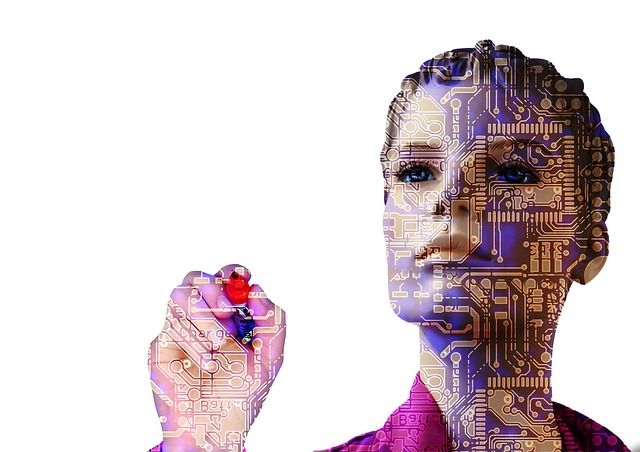Artificial Intelligence is a scientific and engineered approach to make a computer, or an intelligent machine think and learn as smartly as competitively as humans do. AI is to apply the technicalities of human thinking, critical reasoning, and logic to intelligent software systems and make them replicas of the human thought process and problem-solving characteristics.
AI and 2020
Before the global pandemic in 2020, the world had just started imbibing the culture of AI – Artificial Intelligence and its branches like Automation and ML – machine learning. But after COVID – 19, AI and its streams have heavily impacted how we conduct business through smart machines and self-teaching algorithms and the constant fight against the outbreak.

AI indisputably is the king of trends that have changed how humans live, play, and work. The updated technologies that will help people in 2021 to rebuild their lives and to rethink business priorities and strategies are widespread and accepted globally.
Components of Artificial Intelligence
AI is intangible, and its primary objective is to improvise on computer applications and functions. These functions are replicas of human expertise of applying problem-solving, learning, reasoning, analyzing, and scrutinizing.
AI consists of
- Automated Learning
- Planning
- Knowledge Reasoning
- Problem Solving
- Linguistic Intelligence and Natural Language Processing
- Robotics
- Computer vision and Perception
Objectives of Artificial Intelligence in 2021
There are long-term goals associated with the artificial intelligence sector.
- The objectives of AI are planning, representation of knowledge and experience, learning, language processing, realization, critical reasoning, and ability to influence and deploy objects.
- The approach of AI revolves around computational intelligence, statistical methods, and AI traditional coding.
- Computers use AI in the field of psychology, science, philosophy, mathematics, and linguistics.
- Sophisticated software tools are used to work on AI research related to artificial neural networks and mathematical optimization, applying methodologies based on economics, probability, and statistical data.
The Enhanced Need for Artificial Intelligence in 2021
- The primary purpose of developing Artificial Intelligence is to enable machines to think and find solutions like human beings, especially after COVID-19. This is to apply algorithms to complex issues and resolve them in a computer-friendly manner.
- To enhance human thinking and logic and come with alternate resolutions. Also, to cater to questions like how much does artificial intelligence cost and what is the applicability of AI in Industries and businesses.
- To create systems that are experts in their arena of explicating intelligent behavior and have the expertise to plan, learn, explain, demonstrate, and advise further, just like humans do.
6 New Trends of Artificial Intelligence That You Can See in 2021
The primary focus of AI in 2021 will be on improving stakeholder experience besides improving the efficiency or effectiveness of operations.

The AI trends expected in 2021 are:
1. AI talent will remain tight, and it will promote self-directed IT
Talent supply is expected to be a key issue along with the accelerated adoption of AI in 2021. AI solutions will be self-correct and self-heal solutions that will be able to resolve any malfunctions in a proactive way, thus mitigating the downtime of a system.
2. AI structures unstructured data and the focus remains on AI ethics and standards.
AI will facilitate RPA and NLP to leverage machine vision and natural language and to structure unstructured data such as images or emails. The demand for ethical AI is still a top priority besides technicality.
3. IT pushes AI at a larger scale, and it becomes explainable.
Organizations will start executing their AI and ML models into production and to scale. This will enable more data regulations, and AI trust will be pivotal.
4. AIOps gets big and Augmented processes to enter the picture.
AIOps and Augmented processes are given leverage to improve the decision-making and functionality of key processes. This provides an end-to-end digital experience, empowers cross-team collaboration, and integrates seamlessly into the wider collective intelligence and the whole AI system.
5. Voice- and language-driven intelligence takes off.
AI will enable NLP and ASR – automated speech recognition capabilities, and check agent quality, continued compliance, and customer intent understanding.
6. AI and cloud become interdependent.
Artificial intelligence is adopting cloud solutions through which vast amounts of data will be generated, applied, and supercharged.
Let’s quickly go through various trends that AI can exercise and promote in the coming year.
1. Robotic Process Automation (RPA)
Many organizations today are turning to RPA as it streamlines business processes and reduces costs. Further, it helps in automating tedious business processes, thus enabling their employees to provide better, faster resolutions.
2. Conversational AI
AI-powered chatbots using NLP – natural language processing and ML – machine learning provides a more human-like interaction, which is known as Conversational AI. This generates personalization, responsiveness, and customer experience’s reach.
3. The role of AI in Healthcare
AI is helping the healthcare sector through Big Data with high accuracy. For example, it can be extensively used to identify COVID patients, develop thermal cameras, create mobile applications to monitor individual temperatures, and many more.
4. Increase in demand for ethical AI
There is an enhancing demand for ethical AI, and it is at the top of the list
5. AI for knowledge breach and Cybersecurity
AI will be of huge assistance to the security department, supporting it against malicious activities.
6. The combination of the Internet of Things with AI (AIoT)
The confluence of AI and IoT is on the rise, and we will see more products resulting from this amalgamation through host mobile app backend programs like Siri and Alexa.
7. Reinforcement Learning
RL or Reinforced learning is a unique application of deep learning that enhances the effectiveness and efficiency of data.
8. Quantum AI
Quantum supremacy is applied to measure the Qubits for use in supercomputers, which help in solving problems, data interpretation, and forecasting trends quickly
9. AI-Powered Business Analysis and Forecasting
To deeply understand market needs, hyper-automation is combined with cognitive automation AI solutions that help in processing real-time alerts. Abilities like forecasting and analysis are enabled using content-intelligent technologies and AI-supportive practices.
10. Edge Computing
Edge computing is a great cost-effective, time-saving, and consumer-satisfaction generating service that provides gadgets with servers and data storage and allows them to put data into them.
11. Rise of a Hybrid workforce
The human workforce is expected to work with digital assistants, and automated bots post the COVID-19 pandemic. This will lead to more collaborative experiences with AI.
Conclusion
AI’s spectrum is broad, and to scale new heights, big and small organizations must find ways to leverage AI-powered solutions and stay up-to-date with emerging trends.
Thus, we say that Artificial Intelligence is all about creating super-intelligent machines that can eventually surpass the brightest of human intelligence. It includes vehicles like drones, art like poetry, mathematic algorithms and theorems like chess, search engines like Google search, online advertisements, image recognition, virtual assistants like Alexa and Siri, and many other applications related to healthcare, video games, finance, business, and automotive and many other fields.
AI is a vast concept and comprises lots more. It’s a never-ending story of upgrades, updated technology, and excellence in intelligence.






